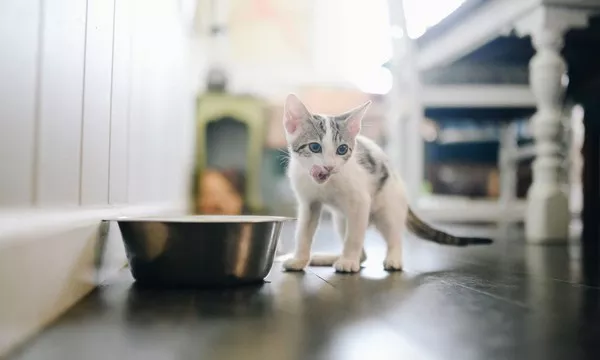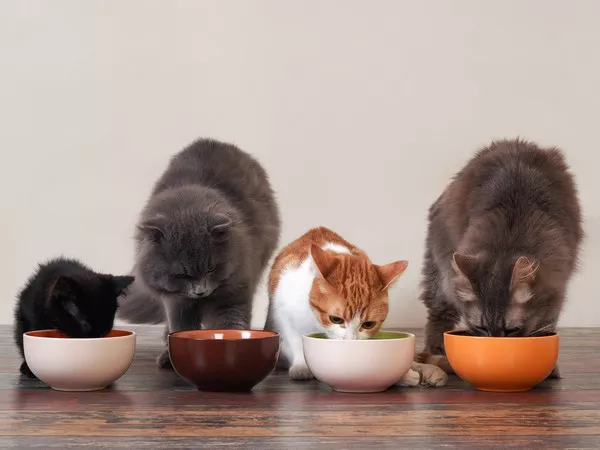The American Shorthair is a popular and beloved breed, known for its robust health and charming personality. Understanding the appropriate weight for a female American Shorthair is crucial for ensuring her overall well-being. This comprehensive guide explores the ideal weight range, factors influencing weight, and strategies for maintaining a healthy weight.
The American Shorthair is a breed that boasts a rich history and a strong, athletic build. Originally brought to America on European ships to control rodent populations, this breed has evolved into a cherished family companion. American Shorthairs are known for their muscular bodies, round faces, and short, dense coats that come in a variety of colors and patterns.
Physical Characteristics:
- Body: Medium to large size, muscular, and well-proportioned.
- Head: Round with full cheeks.
- Ears: Medium-sized, rounded at the tips.
- Eyes: Large, wide-set, and expressive, often corresponding with coat color.
- Coat: Short, thick, and weather-resistant, requiring minimal grooming.
Health Predispositions:
American Shorthairs are generally healthy, but they can be predisposed to certain conditions, including:
Hypertrophic Cardiomyopathy (HCM): A common heart disease in cats.
Obesity: Due to their love for food and a more sedentary lifestyle.
Importance of Healthy Weight
Maintaining a healthy weight is vital for a cat’s overall health and longevity. An ideal weight ensures that a cat can enjoy a full range of motion, engage in regular physical activity, and maintain proper organ function. Conversely, overweight or obese cats face numerous health risks, including:
- Diabetes: Increased body fat can interfere with insulin function.
- Joint Problems: Excess weight puts stress on joints, leading to arthritis.
- Heart Disease: Extra weight can strain the heart.
- Reduced Lifespan: Obesity can shorten a cat’s lifespan by several years.
Weight Ranges
For female American Shorthairs, the typical weight range is between 6 to 12 pounds. This range can vary depending on factors such as age, genetics, and overall health. It’s important to remember that each cat is unique, and a weight that is healthy for one cat might not be ideal for another.
Factors Affecting Weight
Several factors can influence a cat’s weight, including:
Age:
- Kittens: Rapid growth and high energy levels often mean kittens are lighter.
- Adults: Weight stabilizes in adulthood but requires monitoring.
- Seniors: Reduced activity levels in older cats can lead to weight gain.
Activity Level:
- Active cats burn more calories and are less likely to become overweight.
- Sedentary cats need fewer calories to maintain a healthy weight.
Diet:
- Quality of Food: High-quality, nutrient-dense food supports a healthy weight.
- Portion Control: Overfeeding can quickly lead to weight gain.
- Treats: Excessive treats contribute to calorie overload.
Genetics:
- Some cats may naturally have a slower metabolism.
- Predisposition to obesity can be inherited.
See Also:Real Worth of a Snowshoe American Shorthair
Assessing Your Cat’s Weight
Assessing a cat’s weight involves both observation and physical examination. Here are some tips to determine if your cat is underweight, overweight, or at an ideal weight:
Visual Inspection:
- Underweight: Visible ribs, spine, and hip bones; minimal body fat.
- Ideal Weight: Ribs can be felt but not seen; waist is visible when viewed from above.
- Overweight: Ribs are difficult to feel; noticeable fat deposits on the back, face, and limbs; no visible waist.
Physical Examination:
- Underweight: Prominent bones with little to no fat covering.
- Ideal Weight: Ribs can be easily felt with a thin layer of fat covering; a clear waistline behind the ribs.
- Overweight: Ribs are hard to feel under a thick layer of fat; no distinct waistline.
Dietary Recommendations
Proper nutrition is the cornerstone of maintaining a healthy weight for your American Shorthair. Here are some dietary tips:
High-Quality Food:
- Protein: Ensure the diet is rich in animal protein.
- Balanced Nutrients: Include essential vitamins and minerals.
- Avoid Fillers: Minimize grains and fillers that offer little nutritional value.
Portion Control:
- Follow feeding guidelines provided by the food manufacturer.
- Use a measuring cup to ensure accurate portion sizes.
- Consider multiple small meals instead of one or two large ones.
Types of Food:
- Wet Food: High moisture content helps with hydration and satiety.
- Dry Food: Convenient, but ensure it is high in protein and low in carbohydrates.
- Combination Feeding: A mix of wet and dry food can balance nutrition and hydration.
Exercise and Play
Encouraging physical activity is essential for weight management. Here are some ways to keep your cat active:
Interactive Play:
Use toys that mimic prey, such as feather wands and laser pointers.
Schedule regular play sessions to keep your cat engaged.
See Also:British Shorthair Weight
Environmental Enrichment:
- Provide climbing structures like cat trees.
- Offer scratching posts and puzzle feeders to stimulate mental and physical activity.
Routine Changes:
- Encourage play before meals to simulate hunting behavior.
- Rotate toys to keep your cat’s interest.
- Health Risks of Obesity
Obesity in cats can lead to several serious health issues, including:
Diabetes: Excess fat disrupts insulin production and regulation, leading to diabetes.
Joint Problems: Extra weight strains joints, causing pain and arthritis.
Heart Disease: Increased body weight can lead to heart strain and related conditions.
Liver Disease: Obesity can cause hepatic lipidosis, a potentially fatal liver condition.
Reduced Lifespan: Obesity can significantly shorten a cat’s lifespan, affecting their quality of life.
Regular Veterinary Check-ups
Regular veterinary visits are crucial for monitoring your cat’s weight and overall health. During these visits, your vet can:
- Assess body condition score (BCS) to determine if your cat is at a healthy weight.
- Check for underlying health issues that might affect weight.
- Provide tailored dietary and exercise recommendations.
- Weight Management Plan
Creating a weight management plan involves several steps:
Set Goals:
- Determine a target weight with the help of your veterinarian.
- Establish a timeline for achieving the desired weight.
Monitor Progress:
- Weigh your cat regularly to track progress.
- Adjust food portions and exercise routines as needed.
Stay Consistent:
- Adhere to the feeding and exercise schedule.
- Avoid giving in to begging for food or treats.
Seek Professional Guidance:
- Consult your vet or a pet nutritionist for personalized advice.
- Consider therapeutic diets designed for weight loss if recommended.
Conclusion
Maintaining a healthy weight for a female American Shorthair is essential for her overall well-being and longevity. By understanding the ideal weight range, factors affecting weight, and strategies for weight management, you can ensure your cat leads a happy, healthy life. Regular vet visits, proper nutrition, and consistent exercise are key components in achieving and maintaining a healthy weight for your beloved feline companion.
Related Topics:






















